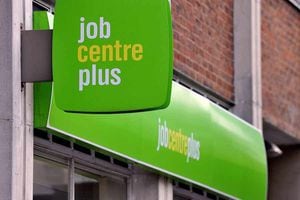Numbers claiming unemployment benefits rises in Shropshire
The number of people claiming unemployment benefits across the West Midlands rose last month.

The total claiming unemployment benefits was up 5,075 for the region from July to 271,905.
Unemployment in the region for the three months to July was however down 1,000 to 129,000 for the three months to the end of July – 4.4 per cent of the working population.
For the UK unemployment increased by 104,000 to 1.4 million for the three months and the national rate of unemployment increased to 4.1 per cent.
Nationally around 695,000 UK workers have been removed from the payrolls of British companies since March when the coronavirus lockdown began, according to official figures.
The Office for National Statistics said the rate of unemployment increased as another 36,000 jobs fell off payrolls across the country.
Covid-19 coverage:
The national claimant count in August was 2.72m – up 2.8 per cent on the month and 102.8 per cent (1.5m) since March. It is 6.5 per cent of the working population.
For the West Midlands the rate is 7.4 per cent.
Shropshire had a rise of 75 claimants to 9,155 (4.8 per cent) with Telford and Wrekin up by 205 to 7,315 (6.5 per cent).
There were 80 more claiming in Powys at 3,710 – a rate of five per cent.
Furlough
ONS director of economic statistics Darren Morgan said: "Some effects of the pandemic on the labour market were beginning to unwind in July as parts of the economy reopened.
"Fewer workers were away on furlough and average hours rose.
"The number of job vacancies continued to recover into August, too.
"Nonetheless, with the number of employees on the payroll down again in August and both unemployment and redundancies sharply up in July, it is clear that coronavirus is still having a big impact on the world of work."
Minister for Employment Mims Davies said: “We recognise that the pandemic has been difficult for many people who are worried about their incomes and that’s why our £30 billion Plan for Jobs is aimed at protecting, supporting and creating jobs and it’s welcome news that there is some recovery in vacancies.
“Meanwhile, we’re creating hundreds of thousands of fully subsidised new jobs for young people through our £2bn Kickstart Scheme to give those starting out a leg up onto the career ladder and offer them hope for the future. And within our jobcentres we’re recruiting a further 13,500 work coaches so all jobseekers throughout the UK have access to tailored support, to build their skills and pivot into new roles.”
Matthew Percival, Confederation of British Industry director of people and skills, said: “The easing of lockdown restrictions and a more flexible Job Retention Scheme in July have led to the beginning of a recovery in vacancies and hours worked. But rising redundancies, rising unemployment and a record fall in the number of young people in work are clear warning signs of what is to come.
“Looking ahead, a successor to the Job Retention Scheme is needed to protect jobs and businesses.”
British Chambers of Commerce head of economics Suren Thiru said: “Despite the slight rise in the unemployment rate, the furlough scheme continues to limit the pandemic’s full impact on headline job figures.
"However, the decline in employees on payrolls and the rise in the claimant count in August as the furlough scheme began to taper is a clear warning that the full impact of coronavirus on the UK labour market is yet to come.
“While there was a rise in the number of job vacancies, this is more likely to reflect a temporary bounce as the economy gradually opened, rather than a meaningful upturn in demand for labour. With many firms are still facing waves of cash flow problems, rising costs and an uncertain economic outlook, it is probable that unemployment will escalate sharply as government support winds down.
“To help avoid a damaging cliff edge for jobs more must be done help firms keep staff on through this deeply challenging period. This should include a significant cut in employer National Insurance contributions and more substantial support for firms placed under local lockdowns.”





